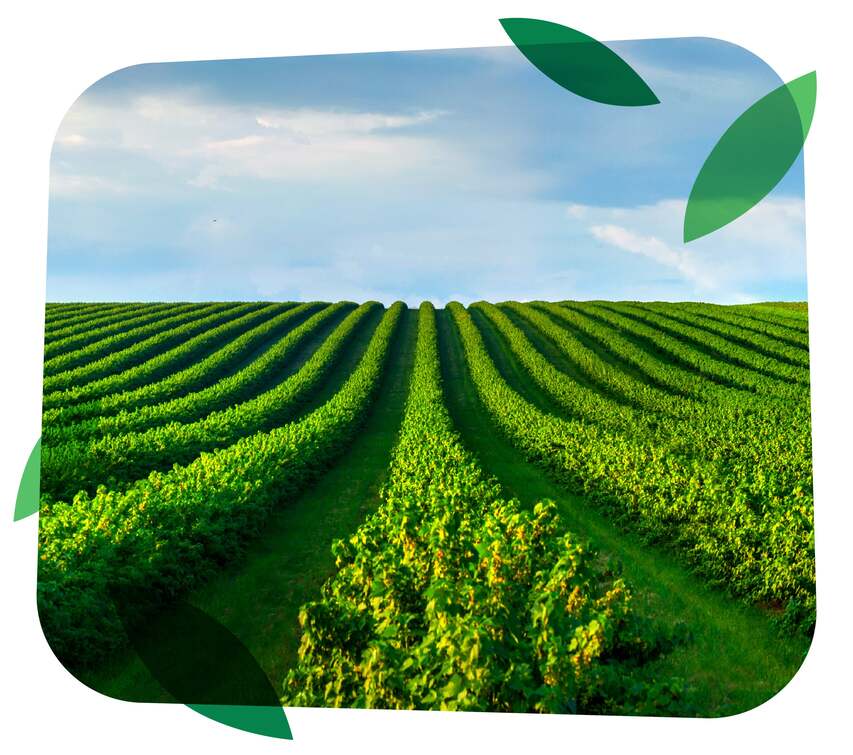Essential nutrients - mineral nutrients that are crucial for plant growth
1. C, H, O – absorbed as gases. Carbon and Oxygen from atmospheric fixation in the photosynthetic reaction and respiration. Hydrogen and Oxygen too, from water hydrolysis.
2. N,P,K,Ca, Mg, S – Macro elements. Absorbed from soil solution. Needed in high ratio, their concentration in tissue is measured by percentages.
N,P,K – Major macro elements.
Ca, Mg, S – Secondary macro elements.
Plant's nutrients
Roots absorb plant-available nutrients from the soil as positively or negatively charged ions
- A divalent cation belonging to the group of alkali metals (similar to magnesium)
- Found in high concentrations in all soils types except very acidic soils
Example of main ions in nutrients solution – Mexico
Typical Ca, Mg and S requirements
In acidic soils, calcium availability is disturbed
Balanced nutrition
All nutrients must be supplied at appropriate rates, to prevent imbalances that may limit plant growth
Plant’s calcium needs
- Calcium strengthens the cell walls of plants.
- Calcium should be available continuously in soluble form to ensure adequate absorption.
- Calcium and nitrogen are about half of all nutrients absorbed by the plant.
- Concentration in the plant 0.1% - 5 %.
- Highest concentrations is found in mature leaves.
- Lowest concentrations is found in young leaves , fruits & flowers .
- Most Ca is found in the Apoplast – cell walls, xylem, middle lamella.
- Apoplastic transport, occurs through the apoplast (the region of continuous cell walls among cells).
Transport through vascular channels
Xylem (apoplastic movement):
- Regulated by the xylem flow.
- The driving force for this flow is water potential differences between soil, leaf and atmosphere.
- Movement from low to high water potential.
- The xylem flow is controlled by transpiration during the day, and by root pressure at night.
- Calcium moves in the plant’s transpiration stream and is deposited mainly in the older leaves.
- Deficiencies are found in the youngest leaves and growing points, which have low rates of transpiration.
- Emerging leaves appear scorched and distorted and may cup downwards because the leaf margins have failed to expand. Fully mature and older leaves are generally unaffected.
- With a severe deficiency, flowers can abort, and the growing point may die.
- Fruits from calcium-deficient plants are smaller and tasteless, and may fail to develop normally at the blossom end rot.
The roles of calcium
- Activates enzymes, is a structural component of cell walls.
- Influences water movement in cells and is necessary for cell growth and division.
- Some plants must have calcium to take up nitrogen and other minerals. Calcium is easily leached.
- Calcium, once deposited in plant tissue, is immobile (nontranslocated) so there must be a constant supply for growth.
- Deficiency causes stunting of new growth in stems, flowers and roots. Symptoms range from distorted new growth to black spots on leaves and fruit. Yellow leaf margins may also appear.
- Calcium takes a key role in the structure and functioning of cell membranes and the strength of cell walls. Calcium also reduces plant susceptibility to diseases.
- Most calcium-related disorders of crops are caused by unfavorable growing conditions and not by inadequate supply of calcium to the roots.
- Rapidly growing crops in hot windy conditions are most at risk. Deficiencies can also develop when cucumbers grow quickly under continuously humid conditions, as in a greenhouse.
- Other contributing factors are waterlogging, soil salinity, high potassium or ammonium supply, and root diseases.
- Structural control -> High demand during the growth period.
Stability
- Structural factor: a component of middle lamella
- Stabilizing factor: Strengthening, stabilizing and regulating macromolecules in the cell wall
Maintaining cell membranes
- Stabilizing factor
- Maintaining the selective properties of cell membranes
Activity in the cytoplasm
Calcium is the 2nd messenger in the cell
|
The calcium moves only in the xylem |



